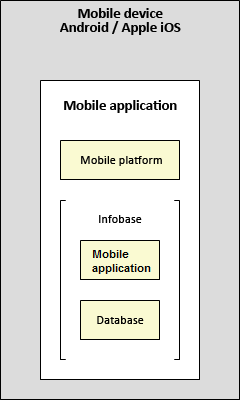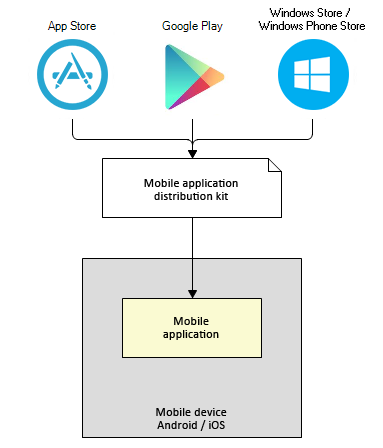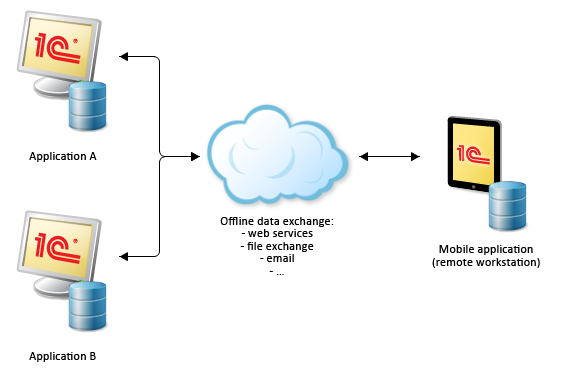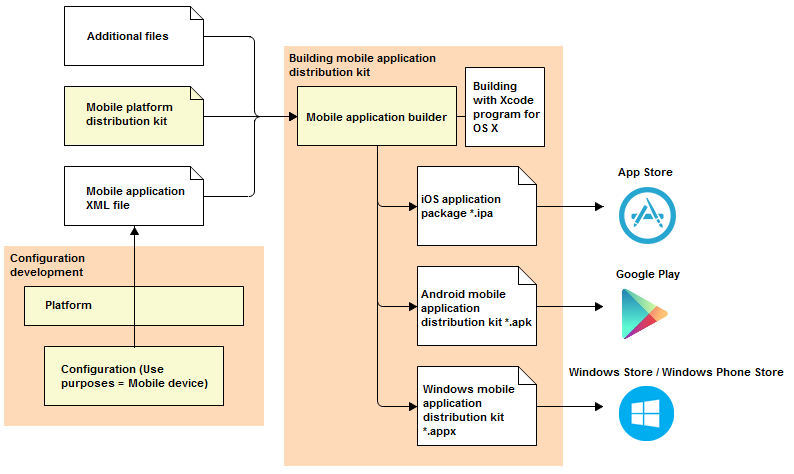A mobile application installed on a mobile device consists of the mobile platform and an Infobase. An Infobase stored on a mobile device contains an equivalent of a file database (for storing user data) and a mobile application (programming code executed on the mobile device).

Users can install mobile applications to their devices by downloading them from application stores: App Store, Google Play, or Windows Phone Store.
A mobile application distribution kit includes:
- Mobile application
- Mobile platform
- Additional files

The main purpose of mobile applications is providing remote workstations capable of running applications that usually run on desktop computers. Standard platform tools provide offline data exchange between the main application and mobile applications.

A mobile application can work with multiple back-office applications, including non-1C:Enterprise ones.

The development of mobile applications is similar to that of regular applications, but with some limitations added by the mobile platform. The full list of limitations is provided in 1C:Enterprise documentation.
If you are developing a mobile application, we recommend that you set the Use purposes configuration property to Mobile device. This automatically hides the options that are not available on the mobile platform and switches Designer tools (such as syntax checks or configuration checks) to the mobile platform context of 1C:Enterprise script.

To build a mobile application ready for uploading to an application store from your configuration, do the following:
- Save the mobile application to an XML file.
- Use the Mobile application builder to build the mobile application distribution kit for Android and iOS from the XML file, mobile platform distribution kit, and additional files.

Next page: Core functionality
See also:

